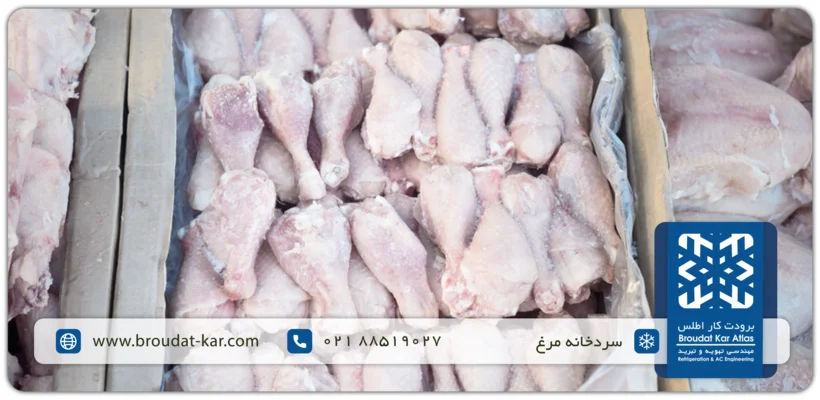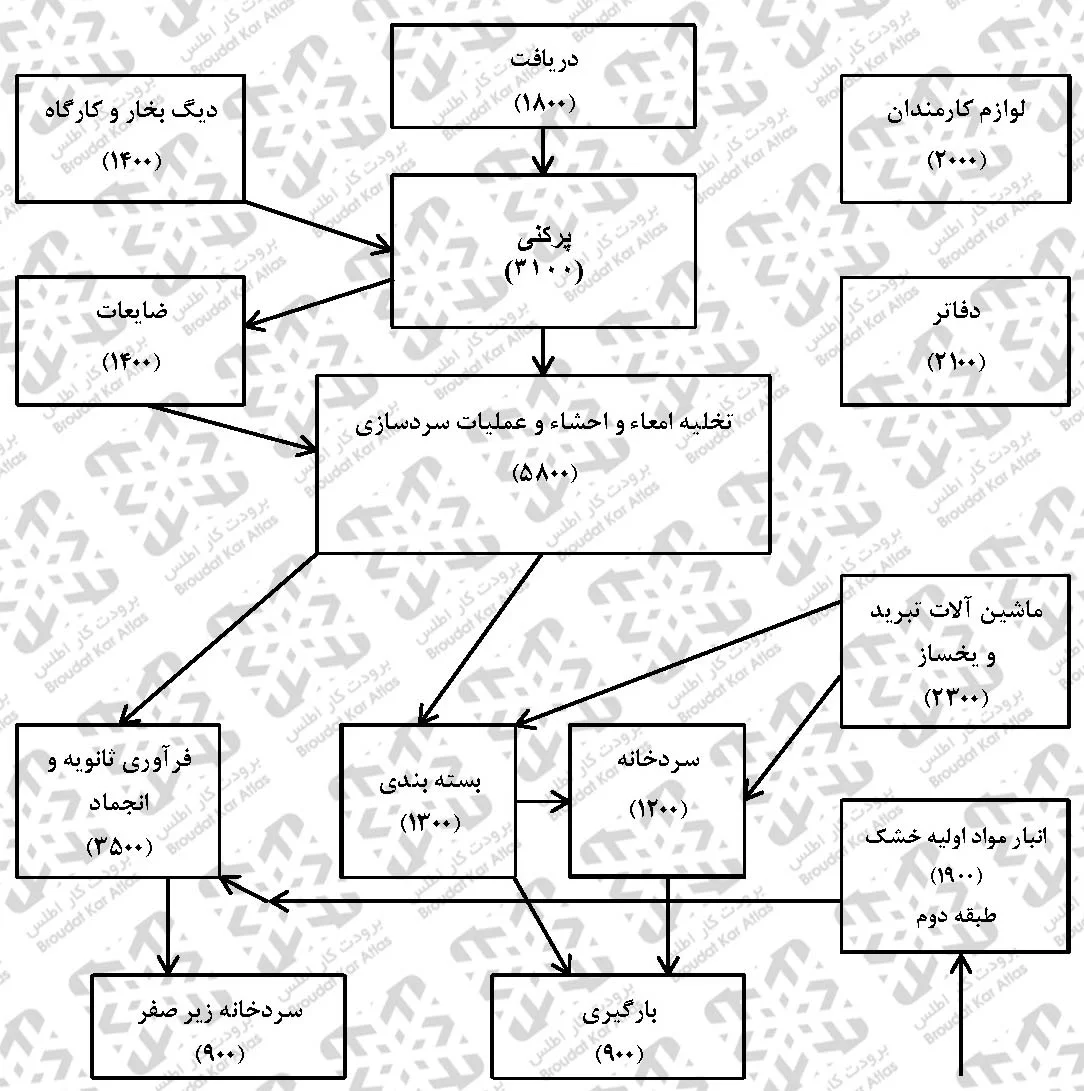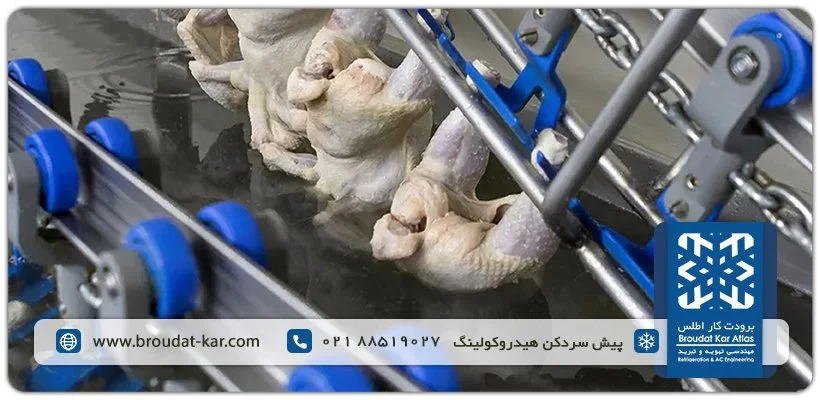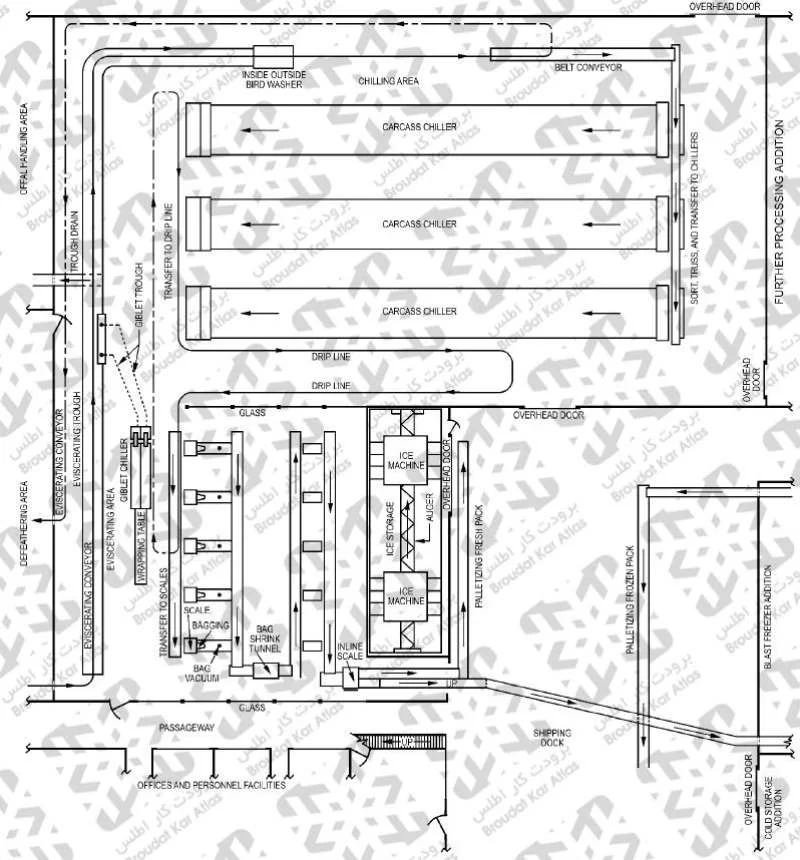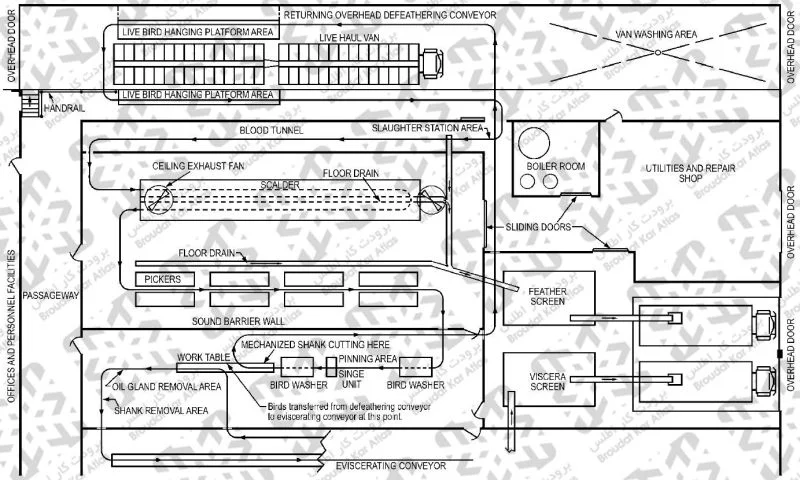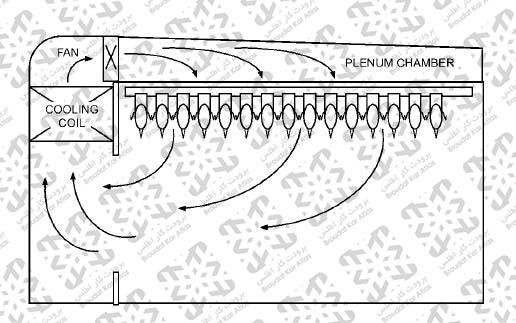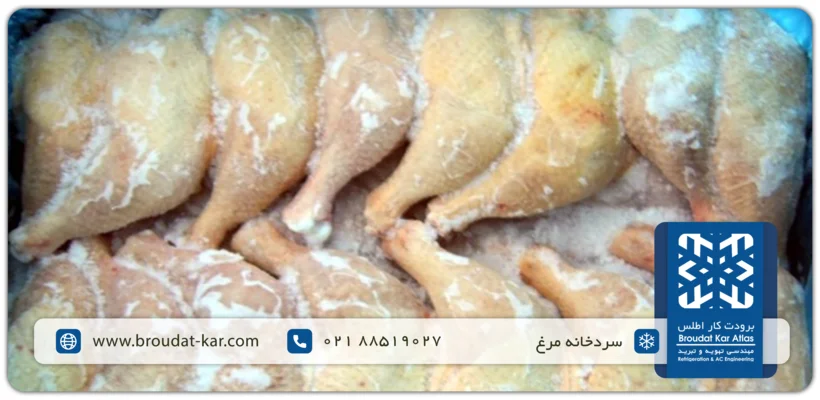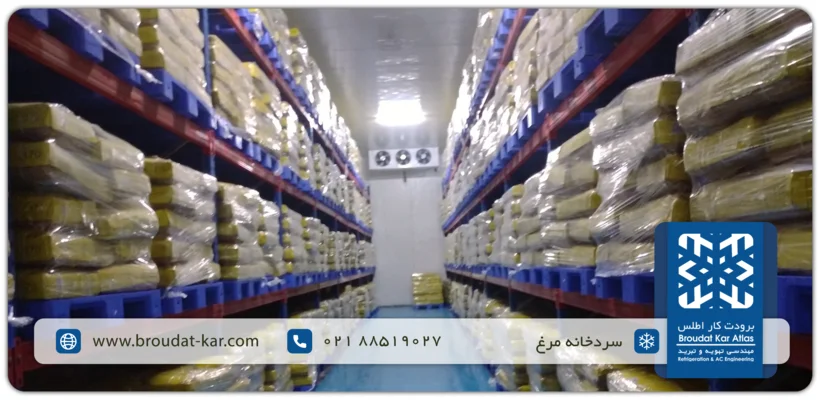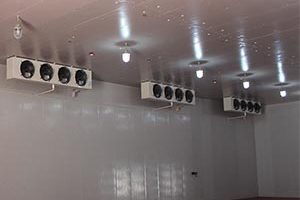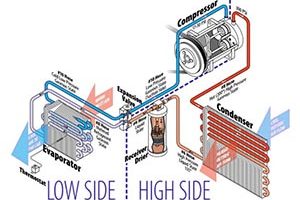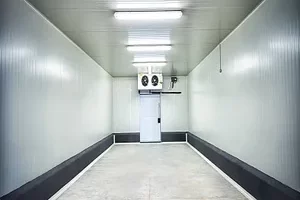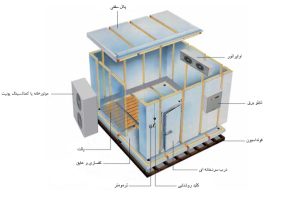What Is Chicken Cold Storage?
Chicken cold storage refers to specialized equipment designed for preserving poultry products like chicken and turkey at low temperatures. Its primary objective is to reactions that lead to spoilage.maintain product quality and safety by inhibiting bacterial growth and chemical 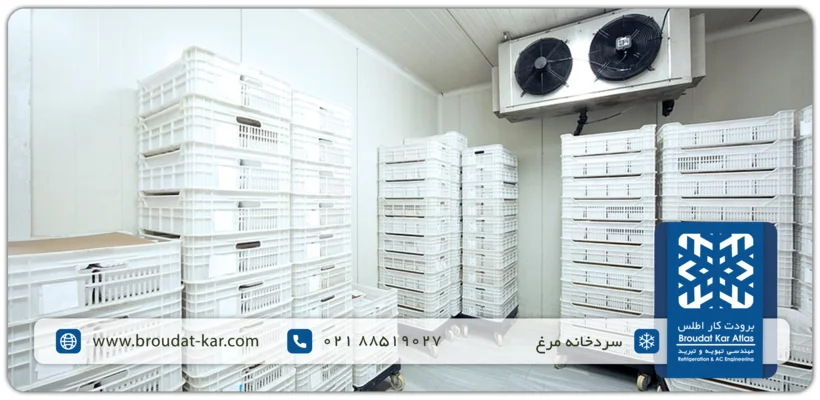
Key Features of Chicken Cold Storage:
- Temperature Control: Chicken cold storage facilities maintain specific temperature ranges, ensuring optimal preservation. For example, pre-coolers typically operate between -1 and 4 degrees Celsius, while storage cold rooms maintain temperatures between -18 and -20 degrees Celsius.
- Controlled Environment: Precise regulation of humidity and air circulation prevents the formation of ice crystals on stored products, preserving texture and quality.
- Hygiene Standards: Adherence to strict hygiene requirements is essential for ensuring the health and quality of stored chicken products.
- Storage Duration: The duration of storage varies based on factors like storage method and product type. While whole frozen chicken can be stored for up to a year, cut chicken pieces should not be stored below zero for more than 9 months.
- Packaging: Proper packaging minimizes exposure to air and contaminants, maintaining product quality during storage.
In essence, chicken cold storage facilities provide controlled environments to preserve the quality and safety of poultry products over extended periods.
Advancements in Chicken Pre-Cooling Techniques
Traditionally, the slow speed chilling room method was employed for stuffed or fresh chickens prior to entering cold storage. However, the growing demand for empty-bellied and ready-to-cook chickens has led to the adoption of more efficient cooling methods, such as the air or slush ice method, before entering the chicken cold storage facility.
Immediate chilling to 4°C post-slaughter prevents bacterial proliferation, preserving safety and flavor.
Advantages and Disadvantages of Chicken Pre-Cooling
The method of submerging carcasses in a layer of ice offers a significantly faster cooling process compared to chilling room methods. Additionally, this approach not only prevents carcass weight loss due to moisture reduction but also increases water content by 4-12%, a crucial factor in chicken processing. However, this water accumulation is subject to regulatory requirements, as American laws mandate disclosure of the maximum water percentage on chicken packaging.
Despite the efficiency of submersion cooling, concerns over excess weight from foreign water, pollution risks during poultry drowning, and the environmental impact of water disposal have sustained the popularity of air-cooling methods among manufacturers. Moreover, submerged precooling is a major contributor to bacterial contamination, prompting the exploration of alternative cooling methods.
New methods to replace submerged precooling include water spray, chilling rooms, dry ice, and liquid nitrogen spray, each with its own set of restrictions and guidelines:
- Water Spray: Offers faster and more efficient cooling due to water’s higher heat transfer coefficient but requires significantly more water compared to submersion cooling.
- Chilling Room: While causing a 1-2% weight loss, it maintains acceptable product appearance, unlike methods involving dry ice or liquid nitrogen, where water evaporation can affect product quality.
Given the diverse limitations and requirements, there is no one-size-fits-all pre-cooling method for chicken. Instead, project-specific considerations and final product expectations should dictate the choice and implementation of the most suitable method.
Processing Steps Before Chicken Cold Storage
The processing of chicken before entering cold storage encompasses three main stages:
- Slaughter: Poultry is placed on the processing line, where slaughter and dressing procedures occur.
- Preparation: This stage involves emptying intestines and viscera, followed by chilling in a dedicated chilling room. Additionally, carcass inspection and grading take place during this phase.
- Segmentation: Carcasses undergo segmentation and deboning processes, after which various products are packed and directed to either the chicken cold room or freezing tunnel for storage or freezing.
Modern poultry slaughterhouses typically handle between 1 and 3 million broiler chickens per week on average.
Disinfection Protocols Before Chicken Cold Storage
Contamination of poultry meat by food pathogens during processing can lead to microbial proliferation or toxin production, posing a significant risk. The HACCP system aims to minimize or eliminate pathogens in various products to prevent foodborne illnesses. Proper refrigeration and stringent temperature control are essential for suppressing microbial growth in high-moisture, perishable foods like meat.
Various methods are employed for disinfection before cooling poultry products:
- Chemical Disinfection: Utilizing sprays of lactic acid (1%), hydrogen peroxide (0.5%), and trisodium phosphate (TSP) effectively reduces microbial contamination.
- Ozone Disinfection: Ozone serves as a potent oxidizer for disinfecting both the products and the cooling system, although its high corrosiveness must be considered.
- Gamma Ray Disinfection: In some countries, poultry carcasses are exposed to gamma radiation for disinfection, though public apprehension about this method impacts product sales. Despite concerns, gamma radiation effectively eliminates up to 95.5% of non-fungal pathogens. The optimal radiation dosage for chickens is around 250Krad.
- Steam Disinfection: Steam under vacuum conditions can kill up to 99% of bacteria in products. Carcasses are guided into a chamber where steam at 143 degrees Celsius is applied for 25 milliseconds under vacuum. The vacuum is then released immediately to prevent surface cooking of the chicken carcass.
Hydro-cooling systems quickly lower chicken temperature post-slaughter, maintaining quality and safety, but risk cross-contamination.
Implementing these disinfection protocols ensures the safety and quality of poultry products before entering cold storage
Chicken Freezing Methods
Chicken Blast Freezer Method
The chicken blast freezer method utilizes wind freezing tunnels that circulate air at -35 degrees Celsius with speeds ranging from 22 to 45 kilometers per hour. To ensure effective freezing, product loading in the tunnel must align with the wind direction, and adequate spacing between products must be maintained to facilitate airflow. Following freezing, the products are transferred to the chicken cold room for storage.
IQF Rapid Freezing for Chicken
IQF (Individually Quick Frozen) is particularly suitable for flavored bone-in chicken pieces, chicken breast, and tender, juicy chicken pieces. These products have high moisture content, and traditional freezing methods may cause them to stick together. IQF addresses this issue by using plastic plates to prevent product adhesion. After freezing, the products are transferred to the chicken cold room for storage.
Importance of Ventilation in Poultry Facilities
A well-designed ventilation system is crucial for maintaining product quality and employee health and comfort in poultry houses, slaughterhouses, and processing plants. Airborne factors such as moisture, heat, and microorganisms pose significant threats, particularly in areas such as chicken unloading, hanging, slaughtering, skinning, and stuffing at the beginning of the slaughter line.
Effective ventilation helps mitigate these risks by:
Controlling Moisture
Proper ventilation regulates humidity levels, preventing excess moisture buildup that can promote bacterial growth and compromise product quality.
Managing Heat
Adequate airflow helps dissipate heat generated during processing, creating a more comfortable working environment for employees and preventing heat-related stress.
Reducing Microbial Transmission
By promoting air exchange and circulation, ventilation systems help minimize the spread of airborne pathogens, reducing the risk of contamination during processing.
Air conditioning system
Air conditioning systems play a crucial role in purifying air to prevent contamination of the final product and ensure the well-being of employees. In a chicken processing plant, maintaining clean air is essential for product quality and employee health.
A common setup involves a positive pressure ventilation system, where air flows from the cleanest areas, such as the chicken cold room and packing hall, to the dirtiest areas, such as slaughter and stuffing zones.
However, it’s unfortunate that in many chicken processing plants, the airflow system often receives lower priority. During renovation operations, the modification, repair, and adjustment of ventilation systems to meet new factory requirements are frequently overlooked. This oversight can compromise product quality and employee safety, highlighting the critical importance of prioritizing air conditioning systems in poultry processing facilities.
Implementing HACCP System in Chicken Processing
The Hazard Analysis and Critical Control Points (HACCP) system is a methodical approach to preventing food safety issues, particularly microbial risks, in chicken processing. It prioritizes preventive measures over final product testing, aiming to identify and mitigate hazards throughout the production process. This proactive approach reduces reliance on testing and ensures product safety.
Defrosting and Consumption of Chicken
Chicken is typically stored frozen in a cold room until shortly before consumption. Defrosting methods commonly include water or air, with minimal difference observed between room temperature, water, refrigerator, or oven defrosting methods.
Refrigeration Equipment for Chicken Cold Storage
– Refrigeration Compressor: The compressor, integral to the refrigeration cycle, plays a vital role in condensing the refrigerant and circulating it throughout the system. Various compressor brands can be utilized in constructing chicken cold storage facilities
– Evaporator: Installed within the cold room, the evaporator facilitates the evaporation of refrigerant, absorbing heat from the surrounding air and products. Evaporators are essential for cooling the cold room effectively.
– Condenser: Located outside the cold room, condensers release the heat absorbed by the refrigerant. Equipped with fans for heat dissipation, condensers are crucial for maintaining optimal refrigeration conditions.
These components, coupled with cold room insulation, create an environment conducive to preserving poultry products such as chicken and turkey at low temperatures while safeguarding their quality. By working in harmony, insulation minimizes heat exchange with the external environment, while refrigeration equipment continuously removes heat from the cold room interior, maintaining the desired low temperature.
Calculating the Cost of Chicken Cold Storage
To estimate and calculate the price of a chicken cold room, several factors must be considered:
- Insulation Costs: Estimate the price of insulation required for constructing the cold room walls, ceiling, and door.
- Refrigeration Equipment Costs: Determine the cost of refrigeration equipment, including compressors, evaporators, and condensers.
- Installation Costs: Add installation expenses to the total, covering labor, equipment setup, and any additional materials needed for installation.
By accounting for these factors, an accurate estimate of the price for chicken cold storage can be calculated.
Pricing Factors for Chicken Cold Storage Components
1. Insulation
– Type of Insulation: The choice of insulation material, such as PU foam, EPS, or XPS, significantly influences the price. High-quality insulation with superior insulation properties generally comes at a higher cost.
– Insulation Thickness: Thicker insulation results in higher initial costs but can yield long-term savings by reducing energy consumption. The thickness of insulation is directly correlated with the energy efficiency of the cold room.
2. Cold Room Door
– Type of Door: Hinged, sliding, or rail doors come with varying dimensions and prices. Selection should be based on specific needs and constraints.
– Door Insulation Thickness: Doors are available in different thicknesses ranging from 7 cm to 15 cm. The appropriate thickness depends on the cold storage temperature, with thicker doors being more expensive due to increased insulation.
3. Refrigeration Equipment
– Refrigeration System Type: The type and power of the refrigeration system, such as screw compressors or piston models, impact pricing. Modern equipment tends to be more expensive but offers enhanced efficiency.
– Cold Storage Capacity: The size and loading capacity of the cold storage directly influence the required refrigeration equipment’s power and cost.
In summary, calculating the price of chicken cold storage involves considering various factors, and it is advisable to consult with sales representatives for detailed information. Additionally, referring to the cold room price page can provide insights into the costs of cold rooms of different capacities and temperature ranges.
Concluding Remarks
In conclusion, poultry cold storage encompasses pre-chilling, freezing, and sub-zero storage processes, all crucial for maintaining poultry product quality, safety, and longevity. Effective integration of freezing and pre-chilling methods ensures optimal temperatures, inhibiting bacterial growth and preserving product texture.
Properly designed insulation, refrigeration systems, and related equipment are paramount for achieving and sustaining optimal chicken cold storage conditions. Utilizing high-quality insulation materials, insulated doors, and reliable refrigeration systems enhances energy efficiency and reduces long-term operational costs.
Poultry cold storage not only extends product shelf life but also facilitates year-round access and distribution, meeting consumer demand while managing inventory fluctuations. It serves as a strategic asset in ensuring a consistent poultry supply to the market.
As the poultry industry advances, embracing technology and adhering to stringent health standards are imperative. Collaboration with industry experts, ongoing temperature and humidity monitoring, and compliance with safety regulations are essential for success in chicken cold storage. Ultimately, these facilities contribute to providing consumers with high-quality, safe chicken products while enhancing the overall efficiency and sustainability of the poultry supply chain.
Related posts
Chicken Cold Storage
Cold Storage Equipment Cold storage equipment encompasses a variety of machines and devices specifically designed to store perishable goods at
Installation and Commissioning of Cold Rooms The meticulous installation and commissioning of a cold rooms facility in a principled
Design and Construction of Industrial Cold Rooms Designing and constructing an industrial cold storage facility involves creating a specialized warehouse

